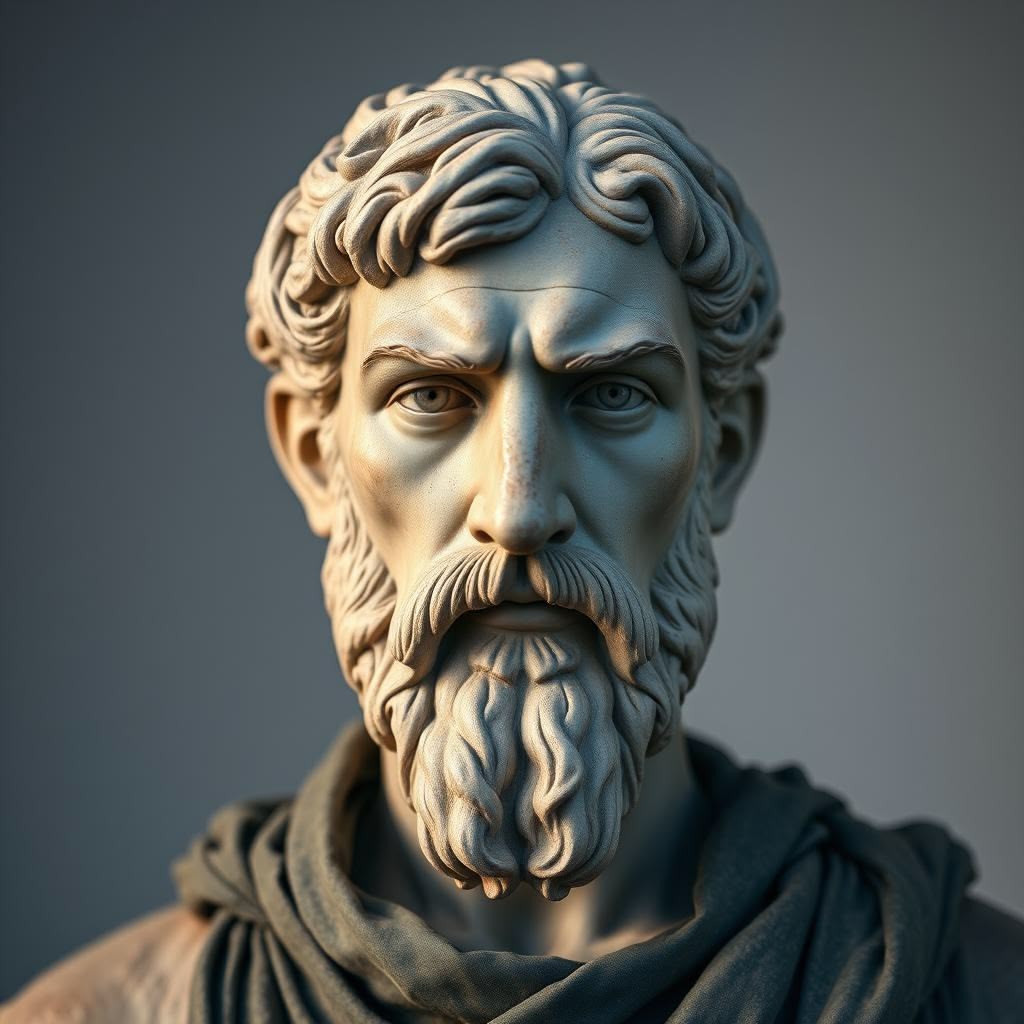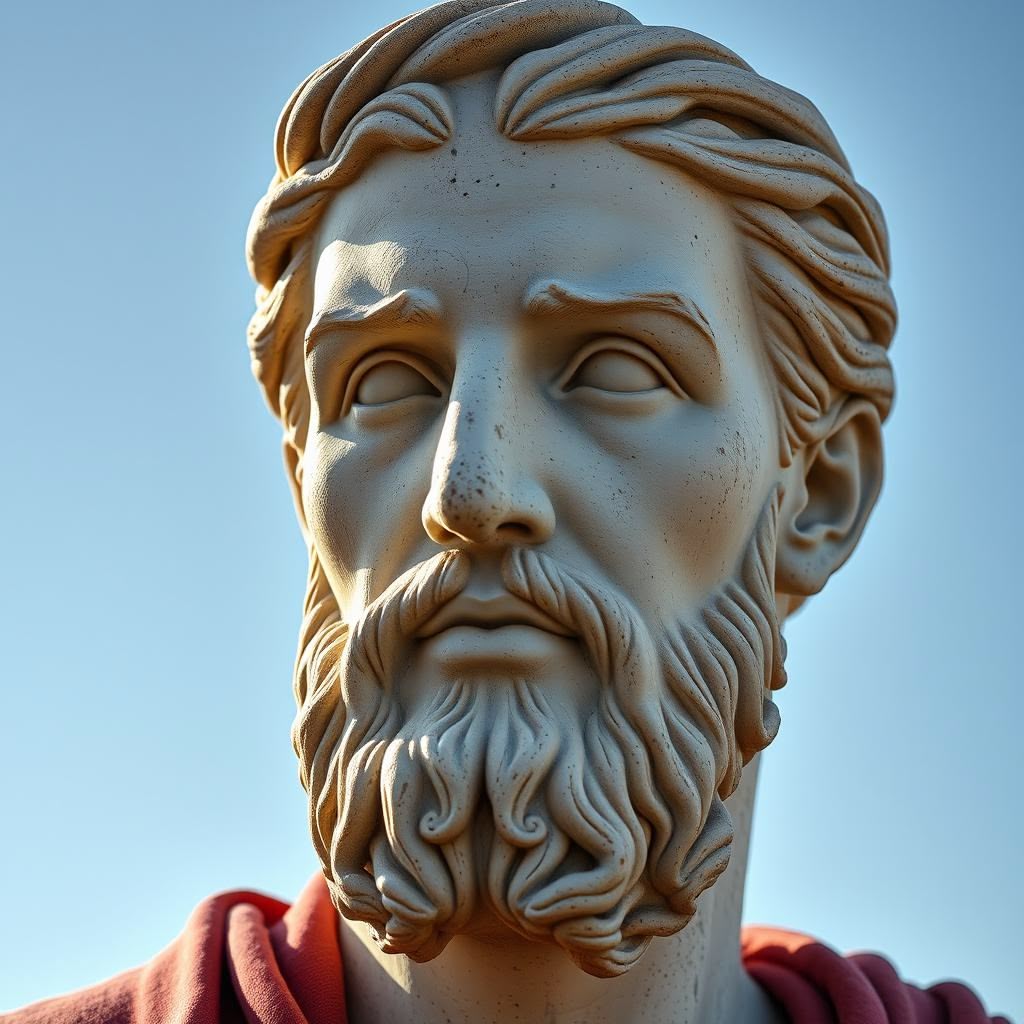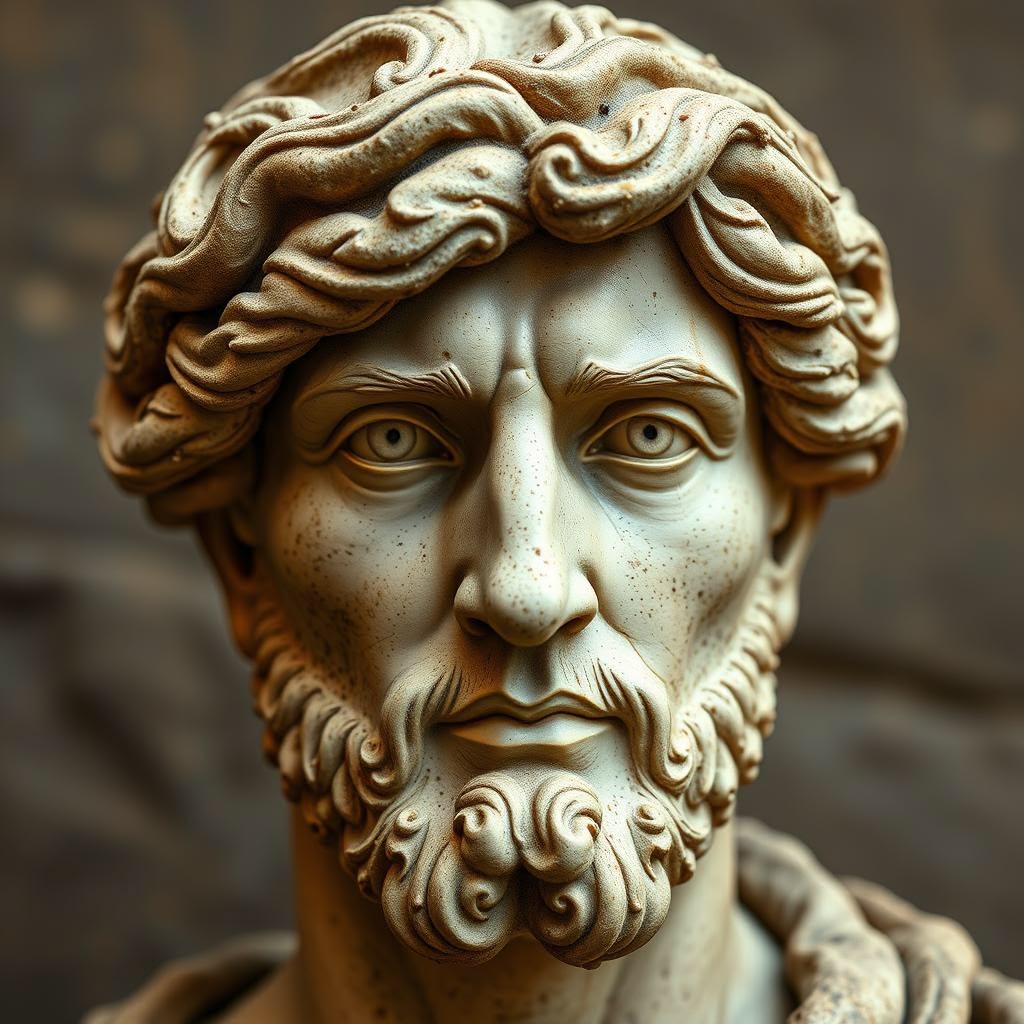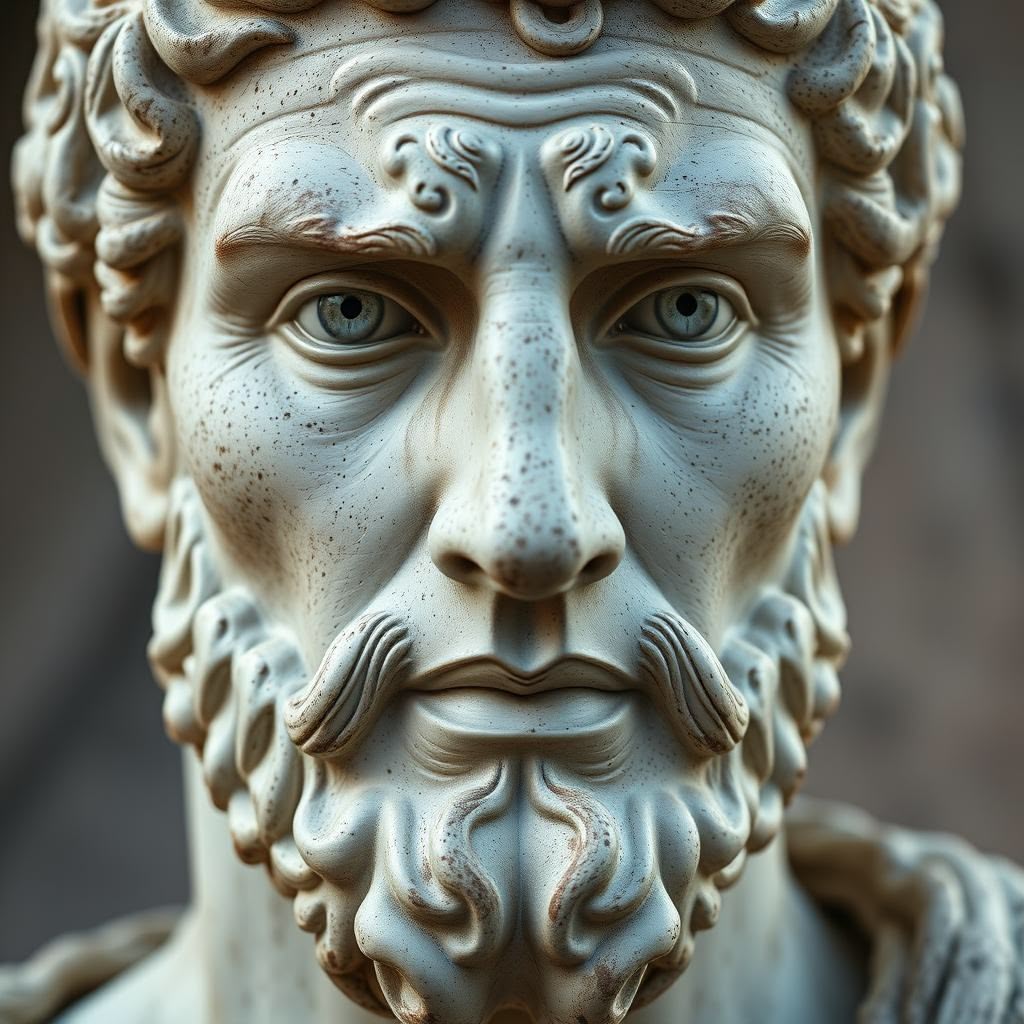The glossy hardcover promises transformation in just 21 days. Another bestseller guarantees happiness through five simple steps. Between the motivational Instagram quotes and celebrity-endorsed mindfulness apps, today’s $13.2 billion self-help industry operates on the unspoken premise that psychological wellbeing is a modern invention—a revolutionary product of our enlightened age.
But what if I told you that a group of ancient Romans had already perfected the art of emotional resilience, mental clarity, and purposeful living over two thousand years ago? What if the core psychological techniques being repackaged and sold today were actually developed with greater depth and nuance when Rome still ruled the Mediterranean?
Marcus Aurelius never had a TED Talk. Seneca never launched a podcast. Epictetus never created a premium online course. Yet these Stoic philosophers developed psychological practices so profound, so enduring, that modern science is only now confirming their effectiveness.
“The most surprising thing about Stoicism is that while it’s ancient, it’s incredibly applicable to our modern lives,” says Dr. William Irvine, professor of philosophy at Wright State University and author of “A Guide to the Good Life: The Ancient Art of Stoic Joy.” “The Stoics were dealing with fundamental aspects of human psychology that haven’t changed in millennia.”

The Dichotomy of Control: The Original 80/20 Rule
Before productivity gurus were advising us to focus on the vital few actions that drive most results, the Stoic philosopher Epictetus had distilled life’s complexities into a single, powerful principle: “Some things are within our power, while others are not.”
This “dichotomy of control” forms the cornerstone of Stoic wisdom and makes contemporary time management systems look superficial by comparison. Modern self-help often treats productivity as an end in itself—get more done, be more efficient, optimize everything. The Stoic approach is more profound: Why waste precious mental energy on things you cannot influence?
Epictetus, who began life as a slave before becoming one of Rome’s most revered teachers, explained: “Make the best use of what is in your power, and take the rest as it happens.” This isn’t just about prioritizing your to-do list; it’s about fundamentally reorienting your entire relationship with the world and your expectations.
When Mark Zuckerberg faces a congressional hearing, when Elon Musk deals with production challenges, when a single parent balances work and childcare—the Stoic principle remains the same: identify what you can control, focus exclusively on that, and accept the rest with equanimity.
Practical Application: The Modern Control Inventory
Take a sheet of paper and draw a line down the middle. For the next challenging situation you face, list everything related to it on this paper. On the left side, write every aspect you have complete control over. On the right, list everything outside your control. The power of this exercise comes from the middle zone—things you have influence over but not complete control. The Stoics would have you redirect energy from the right column to the left, while approaching the middle with careful, intentional influence without attachment to outcomes.
Unlike the simplistic “don’t worry about what you can’t control” advice from modern self-help, the Stoic practice demands rigorous honesty about where these boundaries actually lie. Most anxiety comes from the self-deception that we control more than we do. Most ineffectiveness comes from neglecting what we genuinely can influence.

Negative Visualization: The Antidote to Hedonic Adaptation
While gratitude journals and positive affirmations dominate contemporary wellness trends, the Stoics developed a far more powerful practice called premeditatio malorum (premeditation of evils). This counterintuitive technique involves deliberately visualizing the loss of what you value—health, relationships, possessions, even life itself.
Seneca, a wealthy Roman statesman and playwright, advised: “Set aside a certain number of days, during which you shall be content with the scantiest and cheapest fare, with coarse and rough dress, saying to yourself the while: ‘Is this the condition that I feared?'”
This practice demolishes the flimsy positivity promoted in many modern self-help circles. Rather than avoiding negative thoughts, the Stoics understood that controlled exposure to them builds psychological resilience and deepens appreciation for what we have.
Neuroscience now confirms what the Stoics intuited: our brains quickly adapt to positive circumstances (hedonic adaptation), but negative visualization resets this tendency. When we contemplate losing something, our brain reactivates the neural pathways that originally found value in it.
Practical Application: The Evening Reversal
Before bed, spend five minutes contemplating how your day could have gone worse. What if your morning commute had ended in an accident? What if your heated argument with a colleague had cost you your job? What if that minor health scare had been serious? Don’t rush this exercise—allow yourself to feel the emotional weight of these alternative scenarios.
Then, notice the wave of genuine gratitude that follows. This isn’t toxic positivity or forced optimism. It’s a recalibration of your perspective based on a more accurate assessment of life’s fragility. The next morning, your challenges will appear in proper proportion.
Tim Ferriss, entrepreneur and author, has adapted this practice in his fear-setting exercise, but the Stoic original reaches depths that modern versions often miss—it’s not just about overcoming fear but fundamentally transforming your relationship with everything you value.

Philosophical Journaling: Beyond Productivity Planners
Marcus Aurelius, emperor of Rome and perhaps history’s most powerful Stoic practitioner, never intended for his personal journals to be published. What we now know as “Meditations” was simply his nightly practice of philosophical reflection—a far cry from today’s Instagram-ready bullet journals and five-minute gratitude prompts.
The emperor’s journaling wasn’t about productivity tracking or manifesting future success. Instead, it served as a philosophical dialogue with himself, a rigorous examination of his thoughts, judgments, and actions against the highest Stoic ideals.
In one entry, Marcus writes to himself: “When you wake up in the morning, tell yourself: The people I deal with today will be meddling, ungrateful, arrogant, dishonest, jealous, and surly.” This isn’t pessimism—it’s preparation. By anticipating challenges to his character, Marcus was rehearsing his philosophical principles before facing the day’s tests.
Modern journaling techniques often focus on external goals and achievements. The Stoic approach inverts this, using writing as a tool for internal alignment and character development. It’s not about what you accomplish but who you become.
Practical Application: The Evening Examination
Each evening, take 15 minutes to write reflectively on three questions: What did I do well today? Where did I fail? What could I do differently tomorrow? The power comes not from recording events but from analyzing your responses to them. Were you virtuous when challenged? Did you maintain equanimity under pressure? Did you act according to your highest principles?
This practice builds self-awareness far beyond what most modern journaling practices offer. Ryan Holiday, author of “The Daily Stoic,” notes: “The Stoics were using journaling as a form of spiritual exercise thousands of years before it became a productivity hack.”

Voluntary Discomfort: The Original Anti-Fragility Training
While modern wellness influencers promote cold plunges and intermittent fasting as cutting-edge biohacks, the Stoics had already systematized voluntary discomfort as a philosophical practice. Seneca regularly practiced poverty, deliberately wearing simple clothes and eating plain food despite his immense wealth. Cato the Younger walked bareheaded in all weather. Diogenes (though more Cynic than Stoic) famously lived in a barrel.
These weren’t performative hardships or social media challenges. They were deliberate exercises to reduce dependency on comfort and develop psychological resilience. As Seneca explained, “Set aside a certain number of days, during which you shall be content with the scantiest and cheapest fare, with coarse and rough dress, saying to yourself the while: ‘Is this the condition that I feared?'”
Modern self-help often frames discomfort as something to be overcome on the way to comfort. The Stoics understood that comfort itself is the trap. By voluntarily embracing difficult conditions, you inoculate yourself against fortune’s reversals and discover an inner freedom that transcends circumstances.
Practical Application: Monthly Discomfort Practice
Choose one basic comfort to forego for 24 hours each month. It might be using hot water, eating seasoned food, or using transportation instead of walking. The key is to approach this not as a test of endurance but as an opportunity for reflection. Notice the automatic thoughts that arise: impatience, entitlement, irritation. These reactions reveal your psychological dependencies.
The practice builds what psychologists now call “distress tolerance”—the ability to function effectively during uncomfortable states. This capacity proves more valuable in life than any amount of motivational quotes or comfort-oriented self-care rituals.

The View From Above: Cosmic Perspective Beyond Mindfulness
Before mindfulness apps offered guided meditations for stress reduction, the Stoics practiced a profound contemplative exercise called “the view from above.” Marcus Aurelius described it this way: “You can rid yourself of many useless things among those that disturb you…by comprehending the scale of the cosmos.”
This practice involves mentally zooming out from your immediate concerns to visualize your place in the vast universe. First, see yourself from overhead, then your city, your country, the planet, the solar system, and finally, the cosmos. From this perspective, personal slights and daily frustrations shrink to their true significance—virtually none.
While modern mindfulness often focuses on present-moment awareness (a valuable practice), the Stoic view from above adds a cosmic dimension that transcends temporal concerns altogether. It’s not just about being present; it’s about reconceptualizing your entire existence within the immensity of space and time.
Practical Application: The Three-Minute Cosmic Zoom
When facing a stressful situation, close your eyes and imagine floating upward, seeing yourself from ten feet above. Continue rising until you can see your neighborhood, then your city, country, continent, and finally, Earth as a pale blue dot in the vastness of space. Hold this perspective for one full minute. Now, zoom through time instead of space. Imagine a timeline stretching thousands of years before and after your life. Place your current problem on this timeline and observe its diminished significance.
Return to the present moment with this expanded perspective. The issue hasn’t disappeared, but your relationship to it has fundamentally changed. As philosopher Pierre Hadot noted, this Stoic practice achieves “a transformation of our vision of the world, a metamorphosis of our experience.”

Amor Fati: Radical Acceptance Beyond Positive Thinking
When Epictetus stated, “Don’t seek for things to happen as you wish them to, but wish them to happen as they actually do happen,” he was articulating a concept far more profound than the “good vibes only” positivity that permeates modern self-help. The Stoic principle of amor fati—love of fate—represents radical acceptance taken to its philosophical conclusion.
This isn’t mere resignation to circumstances or passive acceptance. It’s the active embrace of everything that happens as necessary and perfect, including suffering and loss. While contemporary positive thinking often seeks to deny or reframe negative experiences, amor fati incorporates them into a unified whole.
Friedrich Nietzsche, deeply influenced by Stoicism, described it as “not merely bearing what is necessary…but loving it.” This perspective transforms obstacles from things that happen to you into things that happen for you—essential components of your development.
Practical Application: The Reversal of Perspective
When facing a significant challenge, ask yourself: “How might I look back on this experience five years from now and recognize it as essential to my growth?” Don’t settle for superficial answers. Dig deeply into how this specific difficulty might be developing precisely the qualities or opportunities you need.
The second step is more challenging: can you find gratitude for this difficulty now, rather than just in some imagined future? This moves beyond intellectual understanding into embodied wisdom. As cancer survivor and author Kate Bowler observes, “Amor fati is not about finding silver linings. It’s about finding meaning in the darkest places.”

Memento Mori: Death Awareness Beyond Productivity Hacking
Perhaps no Stoic practice stands in starker contrast to modern self-help than memento mori—the contemplation of death. While contemporary productivity gurus might reference mortality as motivation to “live your best life now,” the Stoic engagement with death cuts infinitely deeper.
Marcus Aurelius advised himself: “You could leave life right now. Let that determine what you do and say and think.” Seneca wrote that “He who learns to die unlearns slavery.” For the Stoics, death awareness wasn’t a productivity hack but the cornerstone of an examined life.
Research in terror management theory now confirms what the Stoics intuited: conscious contemplation of mortality can fundamentally alter values and priorities. While unconscious death anxiety often drives materialism and status-seeking, deliberate death awareness can foster virtue and meaningful living.
Practical Application: The Deathbed Perspective
Before making any significant decision, ask yourself: “If I were on my deathbed looking back, would this matter?” Apply this not just to obvious choices like career moves or relationships, but to daily reactions and judgments. Would this traffic jam matter? This criticism? This temporary failure?
For deeper practice, spend ten minutes visualizing your funeral or memorial service. What would you want people to say about your character—not your achievements or possessions? How does your current focus align with those values?
Unlike the vague “live each day as if it were your last” platitudes, this Stoic practice brings precision and rigor to mortality contemplation. As philosopher William Irvine notes, “The Stoics used death to enhance life, not to depress themselves.”

Ancient Wisdom for Modern Challenges
The irony is striking: in an age obsessed with innovation and “disruption,” our most effective psychological tools were developed over two millennia ago. The Stoics understood human psychology with a depth that many modern approaches lack, precisely because they focused on timeless human challenges rather than contemporary symptoms.
Their techniques weren’t designed to help you “crush it” or “10x your productivity.” They aimed at something far more ambitious: a life of virtue, meaning, and tranquility regardless of external circumstances. In a world of increasing complexity and uncertainty, this ancient wisdom offers something more valuable than quick fixes or life hacks—it offers a tested framework for human flourishing.
Massimo Pigliucci, professor of philosophy at City College of New York, explains: “Stoicism is making a comeback because people are realizing that positive thinking and quick fixes don’t work. They’re hungry for something with philosophical depth and practical applications. The Stoics offer both.”
The next time you find yourself browsing the self-help section or downloading the latest wellness app, consider turning instead to these ancient practices. They may lack the glossy packaging and marketing budgets of their modern counterparts, but their effectiveness has been proven across centuries rather than publishing seasons.
As Seneca reminds us: “We suffer more in imagination than in reality.” Perhaps the most profound Stoic wisdom of all is this: the tools for a meaningful, resilient life have always been available. They require no purchase, no subscription, no guru—only practice.
For more explorations of timeless wisdom in a modern context, subscribe to our newsletter. Like the Stoics themselves, we’re interested not in trendy techniques but in enduring principles that transform lives from the inside out.

